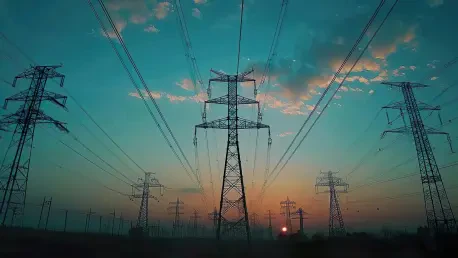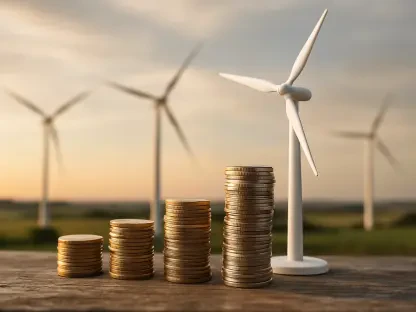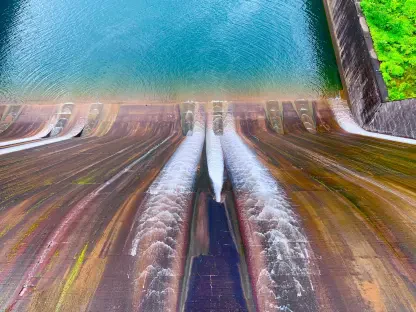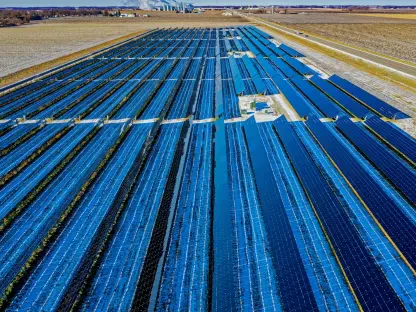Christopher Hailstone, with his extensive background in energy management and utilities, joins us to delve into the complexities of navigating new regulatory landscapes and how companies like NextEra Energy are managing the shifts. His insights offer a valuable perspective on the future of renewable energy and grid reliability in an evolving market.
Can you explain how companies like NextEra Energy are planning to shield their renewable projects from the early tax credit phase-outs under the One Big Beautiful Bill Act?
NextEra aims to remain unfazed by these changes by maintaining their projects in a perpetual state of construction. This constant activity enables them to qualify under existing tax credit structures up to 2029, essentially ensuring that their operations stay shielded from the impending phase-outs. By hedging their projects with strategic planning and adherence to deadlines, they can capture ongoing credits without disruption.
What specific strategies is NextEra employing to secure tax credits for construction through 2029?
The company leans heavily on the bill’s allowance for projects commenced before July 4, 2026. By ensuring they start these projects within the stipulated timeframe, they secure the necessary tax credits extending to 2029. This proactive approach means they’re not racing against time on a project-by-project basis, which is crucial in a volatile regulatory environment.
How does being in a “constant state of construction” benefit a company like NextEra in the current regulatory environment?
Remaining in a constant state of construction is a competitive advantage, as it allows for seamless operations and reduced exposure to potential regulatory pitfalls that might freeze or slow others’ projects. It’s about sustaining momentum; if you’re perpetually building, you can better anticipate and navigate legislative changes while optimizing the financial rewards from existing tax incentives.
Could you elaborate on the exceptions provided by the bill for projects starting before July 4, 2026, and their impact on energy companies?
These exceptions are significant because they create a window where companies can lock in their financials against uncertain future shifts in policy. The strategic decision to start projects before the cutoff date not only maximizes financial incentives but also provides a buffer against the regulatory uncertainties that may hit smaller or less-prepared developers.
Are there particular elements of the One Big Beautiful Bill that you find either challenging or potentially beneficial to the renewable sector?
The real challenge lies in navigating the accelerated timelines for securing construction starts, which can be particularly burdensome for smaller players. However, for well-resourced companies, this presents an opportunity to strengthen their market hold. The bill reshuffles the competitive landscape, inadvertently providing a leg-up to those with the foresight and capability to adapt swiftly.
You’ve mentioned potential opportunities due to reduced competition in 2028 and 2029. How are companies like NextEra preparing to capitalize on this scenario?
With the anticipated dwindling of competition as smaller developers struggle to meet the new demands, larger companies like NextEra position themselves to capture a larger market share. Their robust infrastructure and resource access mean they can optimize operations, absorb struggling projects from competitors, and step in with new offerings when others are withdrawing.
What challenges do you foresee for smaller developers under the new legislation?
Access to capital and the ability to adhere to tight timelines are the foremost challenges for smaller developers. They might find themselves squeezed out by the financial and logistical requirements necessary to kickstart projects within the stipulated periods. Without deep pockets or extensive networks, the ability to compete diminishes significantly.
Can you discuss potential plans for acquiring projects from other developers who may be adversely affected by this bill?
There’s definitely a sense of acquiring strategic projects at potentially favorable terms as smaller developers struggle. This isn’t just a bid for expansion but a tactical move to accumulate valuable assets that align with long-term growth objectives, setting the foundation for future market dominance at lower capital expenditures.
Despite strong earnings, NextEra’s stock dropped post-earnings call. What are your thoughts on this market reaction?
The drop reflects broader market apprehension, particularly around the long-term sustainability of financial projections amidst regulatory shifts. While earnings beat expectations, the market is more focused on perceived vulnerabilities in the energy landscape that might affect future profitability, often discounting near-term successes.
Analysts have expressed concern about a sustained headwind for NextEra. How do you address these concerns about long-term earnings projections?
Addressing these concerns requires transparent communication of strategic initiatives aimed at maintaining a diversified and resilient portfolio, balancing renewable and traditional assets. Emphasizing ongoing innovation and working with a proactive approach to regulatory challenges can assuage investor fears over the long haul.
Could you share more about the recent contracts NextEra has signed since April, totaling 3.2 GW of new projects?
These contracts are a testament to the forward momentum in the renewable sector, reflecting robust demand despite looming policy changes. They emphasize the company’s commitment to growth and adaptation, with new projects slated to reinforce their market position post-2028, countering any interim slowdowns in specific segments.
Is there an increase or decrease in demand for new wind projects?
The demand for wind projects appears to be leveling, not displaying the explosive growth seen in past years. It’s evolving rather than diminishing, as the market matures and factors like storage capacity and grid integration become pivotal to the trajectory of wind energy’s expansion.
What trends are you observing in energy storage demand, and how are they impacting development pipelines?
Energy storage is witnessing burgeoning demand, now accounting for a significant portion of new developments. This shift aligns with a strategic pivot towards not just generating renewable energy but ensuring its reliability and availability, illustrating a commitment to comprehensive energy solutions.
How is NextEra balancing investments between renewable energy and traditional sources like natural gas and nuclear?
Achieving a diversified energy portfolio is a priority, juggling investments to mitigate risk while maximizing returns. Renewable energy remains a focal point, but the inclusion of natural gas and nuclear energy projects demonstrates a nuanced approach to meeting current demands and preparing for future energy landscapes.
Can you give us an update on small modular reactor development and the potential reopening of the Duane Arnold nuclear power plant?
The development of small modular reactors is an ongoing initiative aimed at enhancing nuclear’s role within future energy solutions. The potential reopening of the Duane Arnold plant signals a recognition of nuclear’s enduring role, pending comprehensive assessments to ensure viability and community alignment.
Given the changing regulatory landscape, how do energy leaders plan to maintain leadership in the renewable market?
Staying at the forefront requires constant innovation, strategic acquisitions, and robust infrastructure investment, all while maintaining flexibility to adapt rapidly to policy changes. Leadership rests on the ability to capitalize on new opportunities and mitigate risks as they arise, ensuring sustained growth.
How are companies adapting to the growing demand for gas and nuclear generation amidst shifts in renewable energy policies?
This requires a balanced approach, where coalitions between traditional and renewable energy sources are leveraged. Companies adapt by enhancing flexibility, ensuring infrastructure can pivot between varying energy demands, using gas and nuclear capabilities to bridge gaps and align with policy shifts.
Do you have any advice for our readers?
Embrace a mindset of adaptability and foresight. Renewable energy’s landscape is dynamic, with policy and market forces in constant flux. Staying informed, agile, and prepared to pivot not only safeguards investments but also unlocks new avenues of opportunity in the evolving energy sector.









